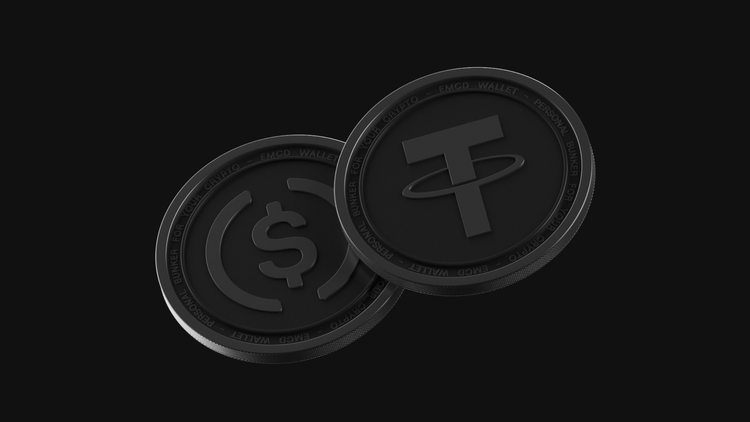How to Start Investing: A Guide for Beginners

Living paycheck to paycheck and relying on a pension isn’t your best solution in the modern world. But what if you could take control of your financial future, secure a steady income, and enjoy a comfortable retirement through investing? Easier said than done, right? The path is full of twists and obstacles that can trip you up along the way.
If you’re wondering how to start investing from scratch and not lose everything within a month, you need a cool-headed approach. Forget impulse decisions and trendy hype – what matters is having a solid investment plan. The real game-changer isn’t what you invest in, but how you do it.
Investing Basics: Where to Start
Investing is the process of putting your assets into someone else’s hands for a certain period with the goal of increasing their value. In simple terms, it’s a way to make your money work for you.
Investing isn’t just about making money – it’s about strategically growing your wealth over time.

Professional investing is typically the domain of legal entities – governments, financial institutions, businesses, and brokers. They operate on a large scale, managing vast sums of money.
On the other hand, when individuals invest their own money, it falls under the realm of personal finance. This term refers not only to personal funds in general but also to the act of investing as a way to manage and grow them effectively.
While you can’t control inflation, protecting your money is entirely possible – you just need to make it work for you and generate more wealth. Some may argue that regular savings accounts are far safer than investments. True, savings accounts offer protection against official inflation, but in reality, price increases can outpace it significantly.
You can actually keep up with real inflation rates through investments. This isn't about abandoning savings accounts; it's about being smart with how you manage your funds. The best approach is to diversify – leave some in a savings account for security, and invest the rest in stocks, precious metals, cryptocurrency, and other investment tools. This way, you protect your money while also allowing it to grow.
To understand how to start investing from scratch, it’s important to clarify some key terms:
- Investment. Putting money to work in an asset to secure it or achieve financial gains
- Investment instruments. Any assets available for investment. These can include securities, currencies, cryptocurrencies, precious metals, real estate, and more
- Securities. Documents like stocks, bonds, or shares that grant the holder ownership rights or claims to something of value
First Steps in Investing
In the investing world, patience and knowledge matter – there are no shortcuts to wealth. Investing is a long-term process. The goal isn’t just to make a profit, but also to preserve it and continue to grow it over time. Patience, strategy, and consistency are your keys.
Advice for beginners: Get started by joining investment communities and clubs, and dive into books on investing and trading. Begin with small amounts. By buying a few stocks and bonds from large companies, you minimize risk while gaining valuable experience. Along the way, keep reading and learning. Gradually, you'll get comfortable in the securities market and may even avoid paying hefty fees to hired consultants and managers.
Understanding investing is just as important as taking care of your health, personal growth, and similar priorities.
The key is to invest regularly and for the long term. The amount you invest is far less important. If you want solid results, start investing early and do it consistently.
Anyone who claims they don't have the funds to invest likely lacks experience in finance or doesn’t see it as a priority. In reality, even $100 a month could be enough to start, but many would rather spend it on everyday purchases. The key is shifting your mindset and making investing a priority, even with small amounts.
Step-by-Step Guide: How to Start Investing from Scratch
Many people, eager for instant and massive profits, rush to open brokerage accounts, deposit funds, and start buying stocks as quickly as possible. As a result, in 99.9% of cases, it leads to nothing but losses.
To avoid falling into this trap, you need to find out how to start investing step-by-step.
Step 1: Define Your Investment Goals
The clearer your goals, the better. What outcome are you aiming for over time? Take the time to write everything down – in a notebook or on a simple sheet of paper. Be specific about your investment timeframe: try figuring out how long you’re willing to commit to achieving your objectives.
Your goal can be short-term or long-term, but the key is to make it as concrete as possible. The more precise you are, the easier it will be to build an effective strategy to reach your target.
Step 2: Tackle Your Debts
If you’re wondering how to start investing today, the first thing you need to do is to make sure you're debt-free. If you're making large monthly loan payments, it's best to hold off on investing for now. A market downturn could put additional financial strain on you, making the situation even worse.
Run the numbers: if your expected investment returns are lower than your loan interest rate, you’ll end up losing money. That’s why it’s crucial to pay off your debts first. Once you’re debt-free, you can redirect those payments into investments with confidence.

When starting to invest from scratch, remember that you’re only predicting future returns. If you expect to earn more than your loan’s interest rate, take a realistic look at your options.
And keep in mind: higher potential profits always come with greater risks. Make informed decisions and don’t let optimism overshadow financial prudence.
Step 3: Assess Potential Risks
Before investing, take a close look at the risks you’re willing to accept based on your financial situation and goals. In investing, risk management is key since it directly impacts the profitability of your portfolio.
A well-balanced approach can help you minimize losses and make more strategic decisions. Keep in mind: smart investing isn’t just about earning profits – it’s about protecting what you’ve already invested.
For example, if your portfolio consists solely of bonds, your returns will be modest, but the risk of losing your money is minimal. On the other hand, if your portfolio is made up entirely of stocks, the potential for higher returns increases, but so does the risk of losing your investment.
From a risk perspective, investment instruments fall into three categories:
- Low-risk
- Medium-risk
- High-risk
Let’s take a closer look at each category.
1. Low-risk investments
These strategies offer stability and security, making them ideal for conservative investors:
- Bank deposits in reputable, trustworthy institutions
- Savings programs with guaranteed returns
- Federal loan bonds – government-backed securities with minimal risk
2. Medium-risk investments:
These options strike a balance between risk and potential returns:
- Bank deposits in smaller commercial banks
- Corporate and bank bonds
- Bond mutual funds and real estate funds
- Stable currencies like USD and EUR
3. High-risk investment instruments:
These investments offer the potential for high returns but come with significant risks:
- Company stocks
- Index and equity fund shares
- Derivatives and futures trading
- Cryptocurrency
Financial market laws are simple: the most profitable instruments are also the riskiest. Keep this in mind, especially when you’re just starting out. Try working with assets where the potential return doesn’t exceed 20-30% initially.
It’s crucial to assess risks carefully, and your approach must be personalized to suit your financial situation and goals. Balancing risk and reward early on will set you up for more successful investing in the future.
Let’s say you have $10 000 available for investment – free money, not borrowed. Now, ask yourself: how much of that are you willing to lose without panicking? Would a 5% decline shock you, or could you calmly accept a 20%, 30%, or even 50% drop in value?
This will help you choose the right financial instruments for your investment.
Of course, your current financial situation is key. Consider increasing the risk level in your investments only with a solid safety net and a stable income. Start cautiously and gradually adjust as your financial foundation strengthens.
A financial safety cushion refers to a reserve of funds set aside for unexpected expenses like losing your regular income, emergencies, or other unforeseen events.
Ideally, this cushion should be large enough to cover 3-6 months of living expenses, allowing you to live comfortably without financial stress while you get back on your feet. This foundation ensures that you can invest without the fear of needing to dip into your savings during tough times.
Step 4: Be Prepared for Investing to Be a Long-Term Process
Understand from the start: you won’t make a fortune overnight in the stock market. It takes time to see significant returns.
Here are some tips for beginners to avoid losing money in the early investing years:
- Make decisions independently. Don’t blindly trust analysts or follow the crowd. Think for yourself. The internet is full of ‘wise’ advisors promising quick riches, but if you lose money following their advice, it’s on you
- Patience and strategy are your keys. Always rely on your own judgment and be prepared for a journey, not an immediate payday.
- Don’t expect huge profits right away. Results will come, but not instantly. Don’t believe those who claim it's possible to get rich quickly. Focus on gaining experience – it will be the key to your future success
- Keep in mind that losses can happen. Follow Warren Buffett’s rule: ‘If you’re not willing to own a stock for 10 years, don’t even think about owning it for 10 minutes.’ Learn to choose stocks whose prices will increase in the long term. By doing this, you won’t be at the mercy of sudden market fluctuations and won’t worry about potential losses. Focus on quality investments that can grow steadily over time
- Stick to your well-thought-out plan. Take the time to decide how much money you’re willing to invest and what exactly it will be spent on, as well as the risks you’re ready to take. It’ll help you stay calm and avoid making rash decisions if your portfolio drops in value. Knowing your boundaries and having a clear strategy in place will make the market ups and downs easier to handle
- Minimize changes to your portfolio. The more frequently you adjust it, the higher the risk of making mistakes, and you may end up spending any potential profits on fees and commissions. Once you’ve made your initial investments, focus on letting them grow over time rather than constantly tweaking your portfolio. Patience is often more profitable than constant rebalancing
- Don’t quit your main job just yet. Investment activities require capital, so you’ll need a steady income source to support your investments. The stock market won’t generate significant money right away, so it’s important to have a stable financial base while you build your portfolio
Step 5: Develop Your Investment Strategy
What exactly is an investment strategy? It’s a plan for buying and selling assets, with clear timelines, specified amounts, and a defined goal.
Keep in mind that without a strategy, you’re essentially just participating in a game called ‘whose money will disappear first’. A solid strategy helps you stay focused and disciplined, turning investing into a thoughtful, long-term process rather than a gamble.

Step 6: Open a Brokerage Account
This step should be taken only after completing all the previous ones. By now, you should have set clear goals, assessed the risks, chosen a strategy, and outlined your investment timeline.
Now, you can start building your portfolio with the financial instruments that interest you. To hold and manage your investments, you’ll need a brokerage account. It’s your gateway to accessing the market and securely storing your assets.
A brokerage account is a personal account where your funds are held and financial transactions take place. This includes buying and selling securities, currency exchange, and other operations.
In essence, a broker acts as an intermediary between you and the exchange. They facilitate the transactions involving securities and help shape your overall strategy for interacting with the market. They ensure that your investments are executed smoothly and in line with your goals.
The profitability of different financial instruments varies, so don’t rush into buying something. Take your time to explore the available options and see what each one has to offer.
When you’re starting to invest from scratch, keep in mind that the effectiveness of your actions in the stock market primarily depends on having a clear goal. Setting a well-defined goal will guide your decisions and increase your chances of success.
Step 7: Don’t Forget About Tax Benefits
When working on the stock market, in addition to broker commissions, there are also taxes to consider. To minimize these costs, it’s important to study the existing tax rates and the tax benefits available to you.
By understanding the tax advantages, you can reduce your overall tax burden and keep more of your profits.
As an investor, your income can come from dividends on stocks, coupons from bonds, or profit from selling securities. You need to check the tax rates for investment profits in your country to ensure compliance and optimize your investments.
You can reduce your tax expenses through methods like:
- Offsetting losses, including losses from previous years
- Adjusting tax payment timelines
These are all forms of tax optimization, and if possible, you should definitely use them. Be creative, combine strategies, and find ways to lower your tax burden while maximizing your returns. By carefully managing your taxes, you can significantly increase your overall profits.
Active vs. Passive Investing
It’s one of the biggest debates in the investing world. Do you try to beat the market — or let the market work for you? Active investors chase alpha, timing moves and picking winners. Passive investors keep it simple, riding the market’s long-term growth. Which strategy actually wins?
What’s Active Investing?
Active investing is when an investor takes the reins, actively researching investment opportunities, building a portfolio, and managing it. This hands-on approach requires constant monitoring and decision-making to maximize returns. It’s all about making moves based on market trends, analysis, and individual expertise.

Key aspects to be prepared for:
- Time commitment. You’ll need plenty of time to research available investment options, analyze them thoroughly, and track how the situation evolves after you invest
- Basic knowledge. Having a foundational understanding of stock monitoring and the ability to analyze your investment moves is essential to make informed decisions and stay on top of market shifts
What’s Passive Investing?
In essence, passive investing is like setting your investments on autopilot. The goal is to get strong returns over the long term with minimal effort.
The key idea is that the investor puts money into the market without diving into the details of analyzing individual investment options. A prime example of this is mutual funds. And if needed, you can always consult with an investment or financial advisor to help guide your choices.
How to Make Money with Crypto
Cryptocurrency isn’t just about buying coins and hoping for the best — it offers multiple ways to build income, both active and passive. Whether you're ready to invest time, money, or both, here are the main strategies people use to profit in the crypto space:
Crypto Mining
The classic way to earn crypto. You invest in hardware to solve complex algorithms and verify blockchain transactions. In return, you receive crypto rewards. This method requires upfront costs and technical setup but can generate steady passive income over time.
Staking
An alternative to mining for Proof-of-Stake (PoS) blockchains. You lock up a certain amount of cryptocurrency in the network and receive rewards for helping maintain its security and operations. Staking is simpler than mining and doesn’t require expensive equipment.
Trading
Active buying and selling of cryptocurrencies to profit from market price movements. Trading can bring fast returns but also carries high risks — it requires market knowledge, strategy, and constant monitoring.
HODLing (Buy & Hold)
A long-term strategy where you purchase established cryptocurrencies like Bitcoin or Ethereum and simply hold them, expecting their value to grow over time. It’s the easiest entry point but requires patience and strong nerves during market dips.
The Bottom Line: There’s no single ‘right’ way to make money in crypto. Some strategies require serious investment and technical skills, others need time and patience. The key is to understand the risks, choose the path that fits your goals — and never invest more than you’re ready to lose.
In this article, we’ll focus specifically on how to start investing in cryptocurrency mining — what it takes, how it works, and how to make it profitable.
How to Start Investing in Cryptocurrency Mining from Scratch
Think mining’s only for pros? Wrong. Anyone can start building passive income from crypto — if you know where to begin. Here’s how to pick the right coin, choose your mining setup, and avoid rookie mistakes.
Choosing the Right Crypto for Mining
So, you’re about to turn electricity into digital gold — but which crypto should you choose first? With so many options, it’s easy to feel overwhelmed. Bitcoin and Ethereum represent the ultimate challenge — reliable and well-known cryptocurrencies that demand cutting-edge hardware and cheap electricity to mine successfully. If you're just starting out, you might want to begin with something a bit more accessible.
Crypto prices vary dramatically: one BTC costs as much as a decent car, while Dogecoin is closer to the price of a cup of coffee. But that’s not an issue since you can mine any coin you want. The key is to calculate profitability.
When choosing a cryptocurrency to mine, keep these key factors in mind:
- Network difficulty. The more popular the coin, the harder it is to mine
- Block reward. How much crypto you’ll earn for solving a block
- Energy costs. If electricity is expensive, mining might eat up all your profits
To calculate your profits, use mining calculators. Just enter your hardware specs, and the service will show you which coin is the most profitable for you.
If you're feeling adventurous, you can explore new altcoins. Who knows, you might stumble upon the ‘next Bitcoin’. But keep in mind, it’s a bit like a lottery — you could strike gold or end up with nothing.
Which Mining Method to Choose
If mining cryptocurrency is your choice, the next big question is: how will you do it right? There are plenty of options, each with its own set of rules. Let’s take a closer look at each method.
Solo Mining
Think of this method as a lottery with a massive jackpot but incredibly low odds. You rely entirely on your own hardware: if you’re lucky enough to find a block, the full reward is yours.
However, competing against large mining pools is nearly impossible, especially in networks like Bitcoin. Solo mining best suits hardcore enthusiasts with powerful rigs and super cheap electricity.
Pool Mining
This is a smarter choice for most miners. You team up with others, boosting your collective chances of finding a block. Rewards are then split based on your contribution.
There is a downside: pools usually take a 1-5% fee, and you have to trust the pool operator. But the big plus is steady, predictable profits, unlike the high-risk solo approach.
Cloud Mining
No need to buy hardware, as you can rent mining power from specialized services. Sounds perfect, right? No noise, no overheating, no tricky setup.
But here’s the catch: the industry is full of scams, and actual profits are often lower than promised. If you decide to try it, stick to trusted companies and carefully calculate your potential returns before investing.
GPU/CPU Mining
A classic choice, especially for altcoins. GPUs are flexible — today you mine Ethereum, tomorrow Ravencoin.
But there’s a trade-off: high electricity costs, noise, and heat. If you already have a powerful PC or are willing to build a mining rig, this can be a solid option.
ASIC-mining
This is the choice of professionals. These machines are built for specific algorithms like Bitcoin or Litecoin and are far more efficient than GPUs.
But there are downsides: ASICs are expensive, loud, and become obsolete quickly. Investing in them only makes sense if you have cheap electricity and a way to handle the noise.
Staking
This is the so-called ‘mining without mining.’ Instead of using your hardware, you lock up coins in your wallet and earn interest for supporting the network. No GPUs, no ASICs, no extra electricity costs — just pure passive income.
However, you’ll need an initial investment in the cryptocurrency itself, and your returns depend on its market price.
Comparing Mining Methods
Method | Pros | Cons | Features |
Solo Mining | Full reward is yours | Very low profitability | Best for rare coins |
Pool Mining | Stable income | Fees, dependence on the pool | Best choice for beginners |
Cloud Mining | No hardware needed | Scam risk, low profitability | Often more unprofitable than profitable |
GPU/CPU Mining | Flexibility, can resell hardware | Expensive electricity, noise | Great for altcoins |
ASIC Mining | Maximum efficiency | Expensive, noisy, quickly outdated | Only for specific algorithms |
Staking | Passive income, eco-friendly | Initial investment required | Profitability depends on coin value |
Follow these tips to choose your best mining method:
- New to mining? Opt for pool mining or staking for steady returns without the market volatility stress
- Got experience and cheap electricity? Go big with ASICs or a GPU rig — just be ready for noise and heat
- Don’t want hardware hassle? Cloud mining sounds tempting, but with scams everywhere, it's crucial to be cautious
- Feeling lucky? Solo mining is like crypto roulette since it comes with significant risks, potential big rewards, and requires plenty of patience
Always run the numbers before choosing the mining method. Factor in hardware costs and electricity bills — what looks profitable today might bleed money tomorrow in crypto's wild rollercoaster market.
How to Store Crypto
Mining your first coins is just the beginning. The real challenge begins now: securing your digital treasure. All options boil down to two main types: cold wallets and hot wallets. Let’s dive into their key features.
- Hot Wallet
It’s accessible on devices with an internet connection like phones, tablets, and PCs. It’s convenient for frequent transactions, but the hacking risk is a concern since it’s always connected to the internet. - Cold Wallet
A cold wallet operates without an internet connection, making it much more secure. Cold or hardware wallets can be stored on a hard drive or USB stick, allowing you to keep them with you. This option is ideal for long-term storage since it’s less vulnerable to online threats.
However, cold wallets also require caution. You should never lose the private key to your wallet. If that happens, you may lose access to your cryptocurrency permanently. Additionally, if the device storing your cold wallet gets damaged, your funds could be lost as well. Always make sure to back up your private key securely and keep the device in a safe place to avoid risks.
7 Common Mistakes Beginner Investors Make: How to Avoid Them
If you’re just starting your investment journey, avoid these frequent pitfalls:
- Skipping education. Knowledge is your best asset. Take advantage of both free and paid courses to build a solid understanding of investing. The more you learn, the better your decisions
- Investing money you can’t afford to lose. Never put your essential living funds into investments. Build your passive income using surplus capital you won’t need for several years. And don’t forget to set up an emergency fund covering 3-6 months of expenses
- Investing in what you don’t understand. If you don’t know how an asset works, its risks, or what affects its value, then you should stay away until you do your research
- Putting all your eggs in one basket. Diversification is your key. Spreading your investments across different assets reduces overall risk and protects your portfolio
- Beware of ‘too good to be true’ promises. If someone guarantees massive profits or offers profits far above the market average, it’s a red flag. High rewards always come with high risks
- Do your ‘homework.’ Research potential partners, brokers, and companies before investing. Due diligence is a must, not a formality
- Keep emotions out of investing. Fear and greed can lead to bad decisions. Stick to your plan, stay disciplined, and make choices based on strategy, not impulse
To avoid common mistakes when diving into crypto investing, you need to keep these straightforward tips in mind. They’ll help you stay on track and minimize unnecessary risks.
- Stay disciplined and plan ahead. Set clear goals, research the market, and stick to your strategy. Start small, then gradually scale your investments as you gain confidence. Reinvest profits wisely and let your gains work for you
- Keep a cool head and stay in control. Volatility is part of the game. Even seasoned investors make mistakes – beginners even more so. Don’t panic. Every trade is a lesson; experience will sharpen your instincts over time. Patience, discipline, and continuous learning. Master these, and you’ll trade with greater confidence and fewer costly slip-ups
- Engage with like-minded investors. Join forums and social media groups to exchange insights, discover new strategies, and learn about potential pitfalls before they happen
- Stay educated and informed. Read books, study successful investment cases, and keep up with the latest market trends. Continuous learning is the key to long-term success
Investing isn’t just about growing money – it’s about creating freedom. Follow these tips, gain experience, and stay committed to your goals. Over time, you’ll master the art of not just protecting your savings through smart investments, but compounding them into real wealth.
FAQ
What should I know as a beginner investor?
Investing involves risk, and there are no guarantees in the market. You should learn the basics: understand key concepts like stocks, bonds, diversification, returns, and inflation before diving in. Control your emotions – fear and greed can lead to poor decisions. Stay rational, stick to your strategy, and invest wisely.
How can I get started with investing?
First, educate yourself – learn independently or through structured courses like EMCD Academy to build a solid foundation. Define your goals, timeline, and the amount you can invest without financial strain. Open an account on a trusted exchange, and always check real user reviews before committing. Smart choices lead to smart investments.
What’s the best way to start learning about investing?
Master the basics – study key concepts and watch educational materials. Stay updated on trends and news to understand how investments fluctuate. Invest modest amounts first to minimize risk while gaining hands-on experience.
What are the different investment strategies?
Conservative – minimizes risk for steady, reliable growth; moderate – strikes a balance between risk and reward; aggressive – maximizes potential returns but comes with higher risks. Choose your strategy based on your goals and risk tolerance.
Can I make money from crypto mining as an investor?
Yes, crypto mining is one of the ways to earn passive income in the crypto space. As an investor, you can either set up your own mining operation by purchasing hardware and covering electricity costs, or invest in existing mining pools to receive a share of the profits without the technical hassle.




